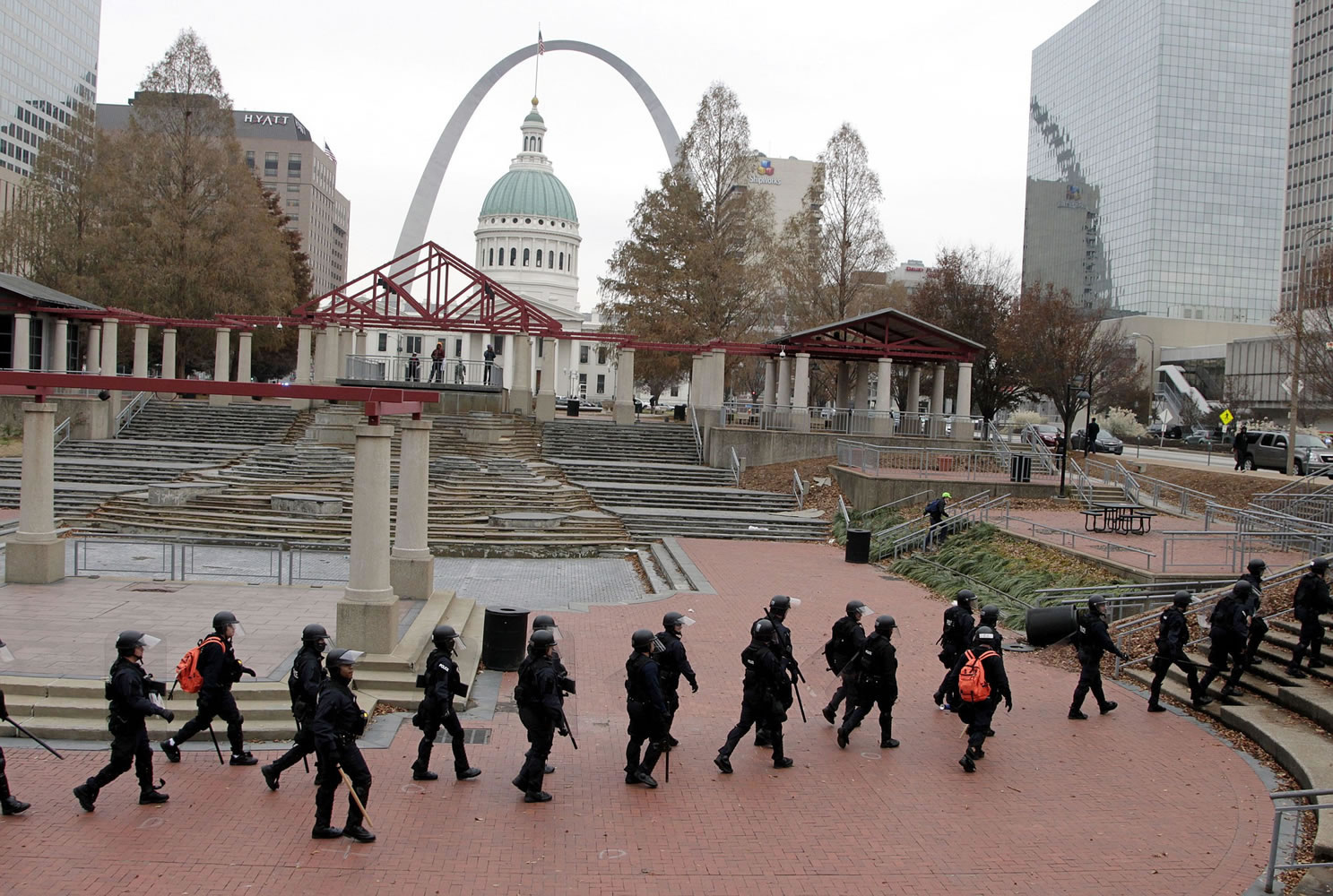FERGUSON, Mo. — The grand jury responsible for reviewing the fatal shooting of Michael Brown faced “an awesome burden” and “an awful lot of work.”
So said St. Louis County Prosecutor Bob McCulloch, addressing jurors when they convened Aug. 20, not long after Brown’s death touched off riots, looting and repeated clashes between protesters and heavily armored police. Ninety-seven days later, those jurors decided not to indict white Ferguson officer Darren Wilson for the death of the black 18-year-old.
Their reasoning was not explained, because Missouri law keeps the deliberations of grand jurors confidential. But in an unusual move, McCulloch released thousands of pages of testimony that jurors heard, plus more than 250 photos and 25 television news videos.
The materials reveal that some jurors raised concerns about their personal safety as they drew close to a decision, and that jurors not only listened to, but questioned, the dozens of witnesses that appeared before them. A look at how the process unfolded:
• THE START.
On the first day, McCulloch assured jurors their identities would be kept secret. But he encouraged them not to wear their grand jury badges when entering and exiting his office to avoid attracting the notice of protesters or reporters.
McCulloch then turned the case over to two assistants — Kathi Alizadeh, the prosecutor who was on call for August homicides, and Sheila Whirley, a prosecutor previously assigned to the grand jury. McCulloch did not participate in any additional grand jury sessions.
The prosecutors began by focusing on the physical evidence, calling as witnesses a medical examiner, crime scene investigators and a forensic pathologist.
• THE KEY PLAYERS.
On Sept. 10, grand jurors turned their attention to Dorian Johnson, a friend who was with Brown on Aug. 9, the day of his death. Prosecutors played several TV news interviews of Johnson and a two-hour audio recording of an interview with Johnson conducted by the Federal Bureau of Investigation as part of a separate civil-rights investigation into Brown’s death.
Jurors watched surveillance video of Brown robbing a convenience store of cigarillos shortly before he was killed. Then they heard testimony from Johnson, who portrayed Wilson as the aggressor in a physical confrontation that began when Wilson urged Brown and Johnson to quit walking in the street. Johnson said Brown had his hands raised when he was shot.
On Sept. 16, jurors heard Wilson’s version of events. Prosecutors first called a Ferguson police sergeant, St. Louis County detective and FBI agent to testify about what Wilson told them.
Then Wilson spoke to jurors. He said he realized Brown was a robbery suspect after initially telling him to get out of the street. When he backed up his vehicle to cut off Brown, Wilson said Brown hit him and grabbed his gun during a struggle through his window. During an ensuing foot chase, Wilson said Brown turned back to charge at him with one hand clenched in a fist and the other under his shirt at his waist. That’s when Wilson said he opened fire.
• THE WITNESSES.
From Sept. 23 through Nov. 4, grand jurors heard from dozens of witnesses with conflicting accounts of what they had seen. Most recounted a struggle between Brown and Wilson at the officer’s patrol car. But there was no consensus about what occurred moments later.
Many said Brown’s hands were raised when he was shot, though they were in disagreement about how high and in what fashion. Some said Brown’s hands were facing outward as if surrendering while others said they were turned inward, as if gesturing.
Other witnesses insisted Brown’s hands weren’t raised at all, and they backed up Wilson’s account of Brown appearing to move toward the officer.
• THE WRAP-UP.
Grand jurors began meeting more frequently in November. Some raised concerns about their personal safety and the potential for the identities to be discovered, prompting prosecutors on Nov. 10 to assure they would do their best to keep them safe.
In their final several sessions, jurors heard from more forensic experts, including a pathologist who had been hired by Brown’s family. Their closing witness was a St. Louis County detective who had testified twice before. He fielded questions about the vantage points of eyewitnesses and Wilson’s account of the events, and he confirmed that police had no video of the shooting.
Jurors asked about the standards for police to use deadly force, then deliberated for nearly three hours on Nov. 21. They took the weekend off and returned to deliberate further on Nov. 24, when their decision was announced.



